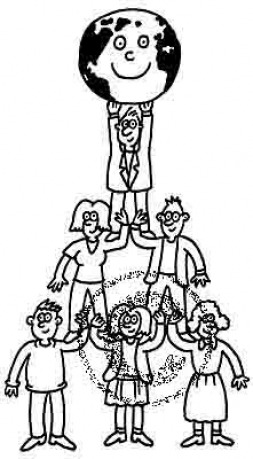The Social Construction of Reality theory is based on the idea that reality is not a set of objective arrangements outside ourselves but is rather constructed through our interaction with others. Each individual has his/her own view on on how to perceive the world, and therefore the labels and understandings associated with objects and ideas differ from one person to the next. This line of study became popular in the 1960's with Peter Berger and Thomas Luckman's treatise The Social Construction of Reality. According to their argument, all knowledge (even the most basic) is derived from and maintained by communication. Thus, social interaction is the process by which all reality is constructed (Littlejohn, 2002).
Self vs Person
Contemporary social scientists and researchers have concluded that the self is both individual and social, for a person's reality is determined by his/her view of the world as well as society's view. It must be noted that there is a difference between a "self" and a "person" as the former refers to the individual and his/her private notion of reality while the "person" is publicly categorized by particular attributes and characteristics established within a culture or group. Self theory is learned through interaction with others as all thoughts, intentions, and emotions are understood from a history of communication. Therefore, the way in which people understand their actions within a predictable sequence of acts (episodes) refers to ethogeny, a concept developed by Ron Harre and Paul Secord. Thus, the language used by people to describe certain episodes reflects that episode's meaning (Littlejohn, 2002).
For information on this theory and an example from an historical perspective, visit the article Social Construction of Reality at the University of Michigan's Center for the Study of Complex Systems.

